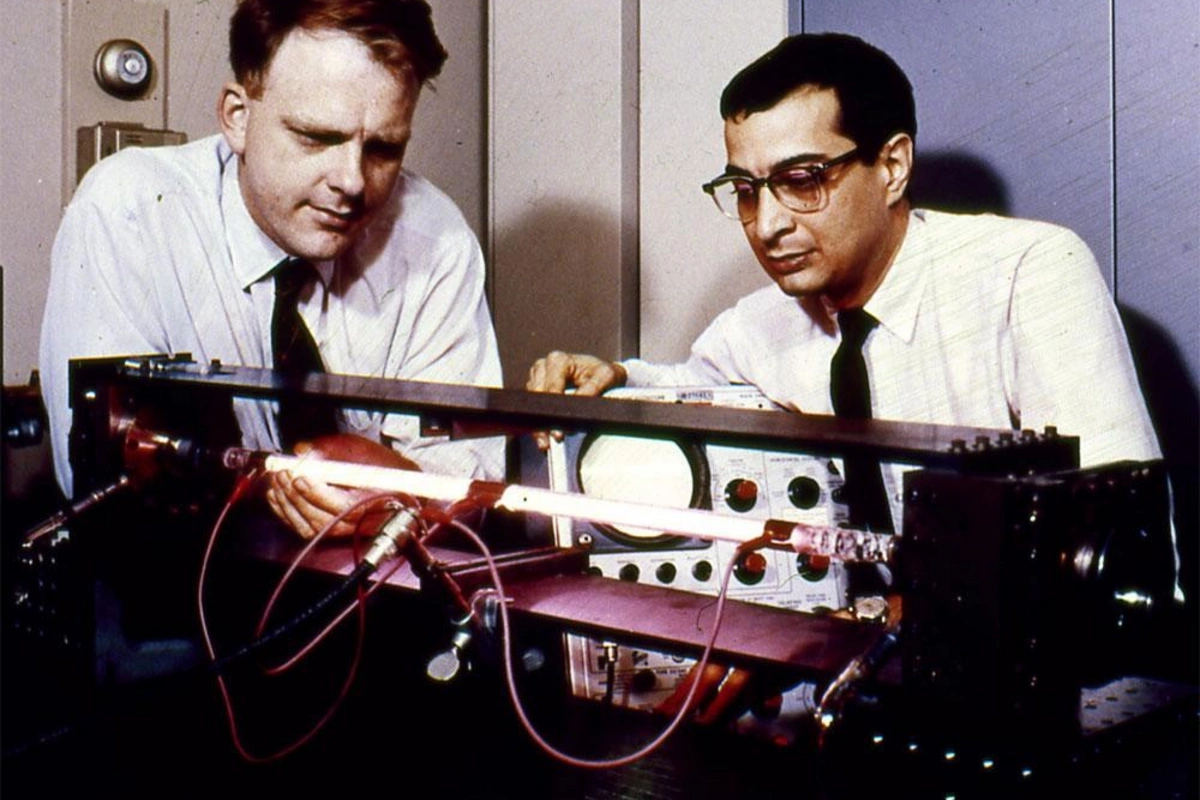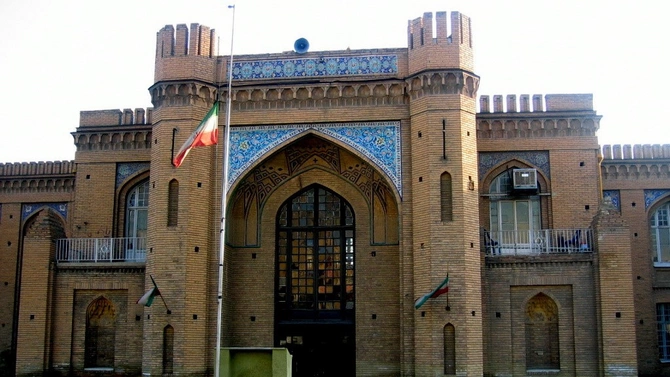
Discover the life and achievements of Ali Javan, an influential Azerbaijani-American physicist and pioneer in laser technology.
Image: IslamicFacts/Twitter
MIT Professor Emeritus Ali Javan was a world-renowned physicist whose contributions to laser technology and quantum electronics led the Daily Telegraph to rank him 12th in their 2007 list of the world’s top 100 geniuses. In 1960 he invented the first gas laser, a technology which would contribute significantly to fibre optics communication, internet data transmission, barcode checkout scanners, holography, medical devices, and more.
Ali Javan was born in Tehran in 1926 into a middle-class Azerbaijani-Turk family who hailed from Tabriz, the capital of Iran’s East Azerbaijan Province. From an early age, he had a keen interest in science. “I started thinking about mathematics from childhood,” he told Azerbaijan International in 1999. “It seemed so natural to enter physics when I grew up. I had no hesitation at all.”
Javan graduated from the elite Alborz High School, an academically elite college-preparatory high school whose alumni have included many politicians and scholars, notably ‘fuzzy logic’ creator Lotfi A. Zadeh and nuclear scientist Reza Moridi. Javan reflected positively on his early schooling experience: " I attended marvellous Tehran schools. I think the teachers must have recognized something in me. They provided me with a tremendous background in math and physics and pushed me to explore concepts far beyond what was offered in the curriculum.” After finishing high school, he started a course at Tehran University in 1947 but moved to the United States in 1949 before its completion.

Mandegar Alborz High School. Image: Wikipedia
Despite never formally finishing either a bachelor’s or master’s degree, by 1954, Javan had completed a Ph.D. in Physics from Columbia University (New York) with Dr. Charles Townes, a Nobel Prize-winning physicist, as his thesis advisor. He continued with a post-doctoral fellowship in atomic clock research at Columbia University until the fall of 1958, when he joined the Bell Telephone Laboratories in Murray Hill, New Jersey. There he was given an opportunity to focus on testing his ideas on gas lasers.
The concept was to extract laser beams using electric currents sent through a mixture of helium and neon, as first set out in a 1959 article for Physical Review Letters. As he told Betty Blair in a 1996 interview, many were very skeptical that the idea would work: “Even people on my own team who were working on it with me had hesitations and doubts.” However, he continued, “as a scientist, you have to push ahead and test your ideas even if you don't know exactly what the ultimate outcome will be. But you had better be certain that the outcome still leads to important scientific results.”
And on December 12, 1960, after months of testing, Dr. Javan and his laboratory team succeeded. “It was the first time in the history of science that a continuous[1] laser light beam had emanated from a gas laser apparatus. I remember looking at my watch. It was 4:20 pm. It had been snowing heavily that day. How do I know it was 4:20 pm? Well, it was such a momentous occasion, and I realized the impact that moment would have upon the future of science and technology.”
After four years of work at Bell, in 1962, he joined MIT (the Massachusetts Institute of Technology) as an associate professor of physics. There he “founded the nation’s first large-scale research center in laser technology.” Professor Javan then developed the first accurate physical measurement of the speed of light and started a research project in the field of high-resolution laser spectroscopy. He was the first MIT Francis Wright Davis Professor of Physics and was an emeritus professor of physics at the time of his death in 2016.
Javan received many prestigious awards during his lifetime, including the 1975 Fredric Ives Medal/Jarus Quinn Prize for distinguished work in optics and the 1993 Albert Einstein World Award of Science (1993) for more than 30 years of research into the physics of lasers.
A true all-around genius, Professor Javan also studied art and music at Columbia University. From this encounter, he decided that physics and music often share the same ‘spirit.’ Bach’s works in particular, he stated, “are so deeply mathematical or, perhaps, you might say that mathematics is so deeply "Bachian." It's especially true when you listen to a Bach fugue or a Bach Mass in a minor key…”
More generally, he saw aesthetic elements throughout science. “There's something immensely beautiful about physics even though it's very difficult. Take the atom – a single atom is absolutely gorgeous. Ask anybody in physics. It moves in waves. It's very dynamic. These days we can study a single atom, track it and measure it. In the early days when I went to school, it wasn't possible to see how the atom emits light and sends a blink. It's such fun! These are the things that really attract you as a physicist.”
Combining art, physics and a sense of fun, Ali Jahan was indeed a scientist who saw the bigger picture.

[1] Earlier that year a pulsed laser had been demonstrated by Theodore Maiman at the Hughes Research Laboratories
Share on social media